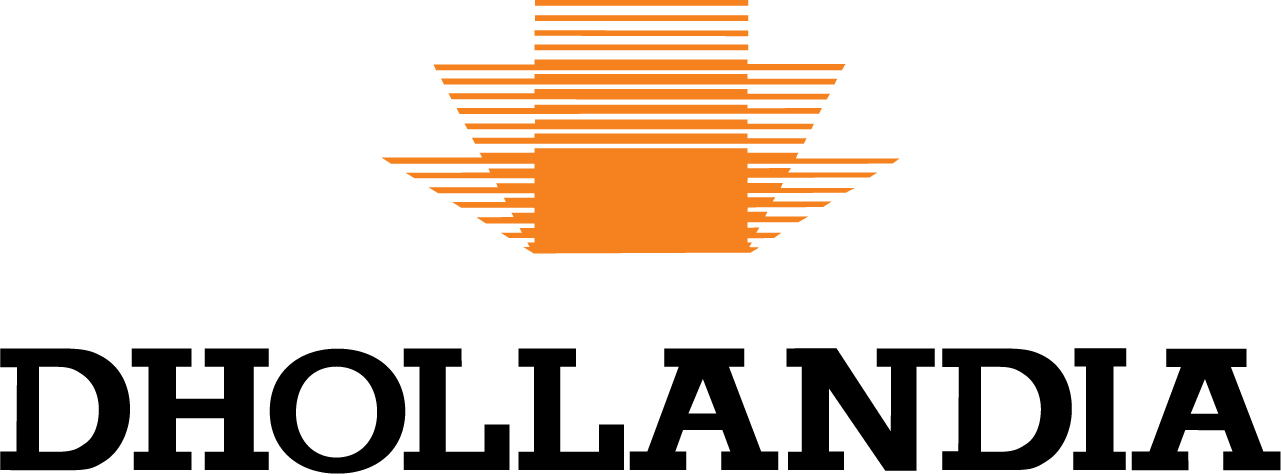
10 Key Tips for Hydraulic Lift Load Calculations
Hydraulic lifts are essential in South Africa for industries ranging from vehicle maintenance in Cape Town to logistics operations in Johannesburg and Durban. Understanding load capacity is critical for safe and efficient operation. Proper calculations ensure lifts function reliably while preventing overloading, structural failures, and safety incidents.
Implementing sound engineering principles in hydraulic lifts involves careful consideration of cylinders, pumps, platform design, and safety factors. Accurate load capacity calculations improve system longevity, operational efficiency, and compliance with local and international standards.
Ensuring hydraulic lifts operate safely requires meticulous attention to every engineering detail. Load capacity is at the heart of this, determining how much weight can be safely lifted while considering both static and dynamic factors.
Comprehensive design principles, including cylinder sizing, pump flow analysis, structural integrity, and fatigue considerations, ensure hydraulic lifts perform reliably under South African operational conditions.
1. Maximum Load Determination
Accurately determining maximum load is crucial for hydraulic lifts. The load calculation accounts for the platform, attachments, and cargo. Misestimating load capacity can lead to failures and safety risks. Hydraulic lifts must be designed to accommodate all foreseeable loads with adequate safety margins.
Engineers consider several factors when calculating maximum load, such as cylinder bore area, pump pressure, and system efficiency. Real-world applications often require adjustment for friction losses, misalignment, and uneven weight distribution.
- Include the platform, attachments, and cargo in the total weight calculation.
- Factor in hydraulic cylinder specifications, pump pressure, and efficiency.
- Apply conservative safety margins to account for dynamic effects and environmental conditions.
- Consider potential misalignment, friction, and uneven load distribution.
- Review worst-case scenarios for peak load handling.
Accurate maximum load determination ensures hydraulic lifts function safely and optimally. These calculations guide cylinder selection, pump sizing, and structural design.
Regular review and verification of load capacity are necessary to adapt to changing operational conditions and prevent overloading incidents.
2. Centre of Gravity Considerations
Load placement significantly impacts hydraulic lift stability. The centre of gravity of cargo affects how forces are distributed across cylinders and support structures, influencing tipping risk and system stress.
Shifts in the centre of gravity can introduce large moments that challenge platform stability. Engineers must ensure the load remains balanced and within the platform’s footprint.
Calculations account for both horizontal and vertical positioning of the centre of gravity. Off-centre loads may require structural reinforcement or cylinder adjustment to maintain stability.
South African operational environments, including uneven floors or vibration, demand that load placement be controlled and monitored. Proper load distribution mitigates the risk of uneven stress and premature component wear.
3. Hydraulic Cylinder Sizing
Proper cylinder sizing is essential for safe and efficient hydraulic lift operation. Engineers determine the required bore diameter and stroke length to meet lifting requirements and pressure constraints.
Sizing ensures that cylinders can handle expected forces, including any dynamic effects, without overstressing the system. Mis-sizing can lead to insufficient lift or premature cylinder wear.
- Calculate bore diameter from required lifting force and operating pressure.
- Determine stroke length to accommodate lift height and mounting allowances.
- Include effective rod-side area for double-acting cylinders.
- Correct for mounting angles or mechanical linkages.
- Apply a safety factor to account for misalignment, dynamic forces, and wear.
Cylinder selection must balance efficiency and safety. Proper sizing extends service life and ensures predictable system performance.
Ongoing monitoring and maintenance of cylinders prevent unexpected failures and maintain operational reliability.
4. Pump Pressure and Flow Rate Analysis
Hydraulic pump pressure and flow rate determine lift speed and operational efficiency. Matching pump capacity to cylinder specifications is essential for predictable lift performance.
Flow rate affects how quickly a lift reaches its desired height. Losses in hoses, valves, and fittings must be considered to achieve accurate calculations.
Engineers must select pumps that provide sufficient pressure with margin for efficiency losses and heat dissipation. For high-duty South African operations, this prevents overloading and fluid degradation.
Pump selection integrates desired lift speed, cylinder volume, and system losses. Properly sized pumps reduce operational risk and improve equipment lifespan.
Maintenance schedules ensure pumps operate within specifications, maintaining consistent hydraulic lift performance over time.
5. Material Strength of Platform and Frame
The platform and supporting frame must sustain both static and dynamic loads safely. Material selection and structural design are key to reliability and durability.
Steel grades such as S355 are commonly used for their strength and fatigue resistance. Design must account for bending, shear, deflection, and local buckling.
- Evaluate load path from cargo to support points.
- Calculate bending moments, shear, and deflection for maximum loads.
- Select materials with adequate yield and fatigue strength.
- Reinforce areas subject to stress concentration.
- Implement corrosion protection suitable for South African climates.
Repeated lifting cycles necessitate fatigue considerations in both frame and platform. Proper structural integrity ensures long-term reliability.
Inspection and maintenance programs support the ongoing safety and performance of hydraulic lifts in industrial environments.
6. Safety Factor Calculations
Safety factors provide a critical margin above expected loads. They account for dynamic effects, wear, and unanticipated operational stresses.
Typical hydraulic lift designs use safety factors between 1.25x and 2x, depending on environmental conditions and operational duty. Applying these across cylinders, pumps, and structural components ensures comprehensive protection.
Three key considerations in safety factor application include: the maximum anticipated load, dynamic effects from lifting or lowering, and environmental influences such as dust or temperature.
Including adequate safety margins in design reduces risk and improves regulatory compliance. South African conditions often necessitate higher margins to accommodate operational variability.
Safety factors should be documented and revisited when system conditions or usage patterns change, ensuring continued protection.
7. Load Distribution and Multi-Point Support
Proper load distribution across multiple cylinders or supports enhances stability and reduces stress concentration. Uneven loads can compromise system integrity.
Engineers must evaluate the worst-case scenarios where one support may bear more weight due to load offset. Structural reinforcements and load spreading mechanisms mitigate this risk.
- Identify the number of support points and distribute nominal load accordingly.
- Design platform to spread uneven loads efficiently.
- Include cross-bracing and spreader plates as needed.
- Monitor load distribution during operation.
- Calculate worst-case forces for each support to ensure safety.
Even distribution increases hydraulic lift longevity and operational reliability. Regular checks prevent overloading individual supports.
Design considerations must adapt to real-world operational conditions, ensuring consistent performance in diverse South African environments.
8. Dynamic vs. Static Load Calculations
Hydraulic lifts experience dynamic forces in addition to static weight, including acceleration, deceleration, and cargo movement. These forces must be integrated into load capacity calculations.
Dynamic loads may increase total stress on cylinders, frames, and supports. Ignoring these effects can lead to premature failure.
Designers often apply a dynamic multiplier to account for additional forces. This ensures systems remain within safe operating limits under variable operational conditions.
Accounting for dynamic effects improves the safety, stability, and longevity of hydraulic lifts. It also informs fatigue analysis and maintenance planning.
9. Fatigue Analysis of Components
Repeated load cycles can lead to fatigue failure, particularly in cylinders, welds, and hydraulic lines. Understanding component fatigue is essential for predicting service life.
Analysis includes the expected number of cycles, stress ranges, and material endurance limits. Proper fatigue consideration extends lift reliability and prevents unexpected downtime.
- Estimate the number of cycles over the system’s life.
- Determine stress ranges for cylinders, welds, and hoses.
- Select materials with appropriate fatigue strength.
- Include dynamic loads in stress calculations.
- Develop maintenance schedules based on expected fatigue life.
Fatigue monitoring and inspection ensure continued safe operation. Component replacement can be scheduled before failure occurs.
Designing for fatigue resistance enhances operational safety and reduces long-term maintenance costs.
10. Compliance with Standards
Hydraulic lifts must adhere to international and local standards to ensure safety and regulatory compliance. EN 1570 and EN 81 series provide guidance for platform and lift systems.
Compliance includes verifying load capacity, structural integrity, and operational safety. Documenting calculations and safety margins demonstrates regulatory due diligence.
Adherence to SABS standards and occupational health regulations ensures hydraulic lifts meet South African safety requirements.
Maintaining comprehensive documentation facilitates inspections and audits. Compliance supports long-term operational safety and liability protection.
Case Studies and Expert Insights
Industrial platform designs demonstrate the importance of integrating cylinder sizing, pump selection, and structural design. Scissor-lift studies show that geometry and support placement significantly affect load requirements.
Experts emphasise bore size, rod diameter, and alignment for reliable hydraulic lift performance. Statistical data indicates cylinders designed for 5-30 tonnes are common, with safety factors critical in dynamic environments.
Observations from South African operations indicate that environmental conditions, variable flooring, and heavy-duty use necessitate conservative design choices and robust maintenance programs.
Practical Tools and Checklists
Engineers and facility managers can follow structured approaches for hydraulic lift design and assessment. This includes maximum load definition, centre of gravity calculations, cylinder and pump sizing, structural analysis, and maintenance planning.
Spreadsheets, FEA, and hydraulic simulation tools support accurate calculations. Documentation and checklists ensure safe and efficient operation.
Regular review, monitoring, and adjustments ensure hydraulic lifts perform reliably, even under high-duty or variable operational conditions.
A Fundamental Part of Safety and Reliability
Hydraulic lifts in South Africa require precise engineering to ensure safe and reliable operation. Accurate load capacity calculations are fundamental, affecting cylinder sizing, pump selection, platform design, and overall system performance.
By incorporating conservative safety margins, fatigue analysis, load distribution, and compliance with local and international standards, engineers can design hydraulic lifts that operate safely and efficiently. At Dhollandia SA, we offer expert support in all aspects of hydraulic lift design and maintenance. Contact us to ensure your systems are optimally designed and maintained.
Contact us at Dhollandia SA to ensure your hydraulic lift systems are optimally designed for safety, efficiency, and longevity. We have the engineering knowledge and local experience to assist you with every aspect of hydraulic lift design and maintenance.
